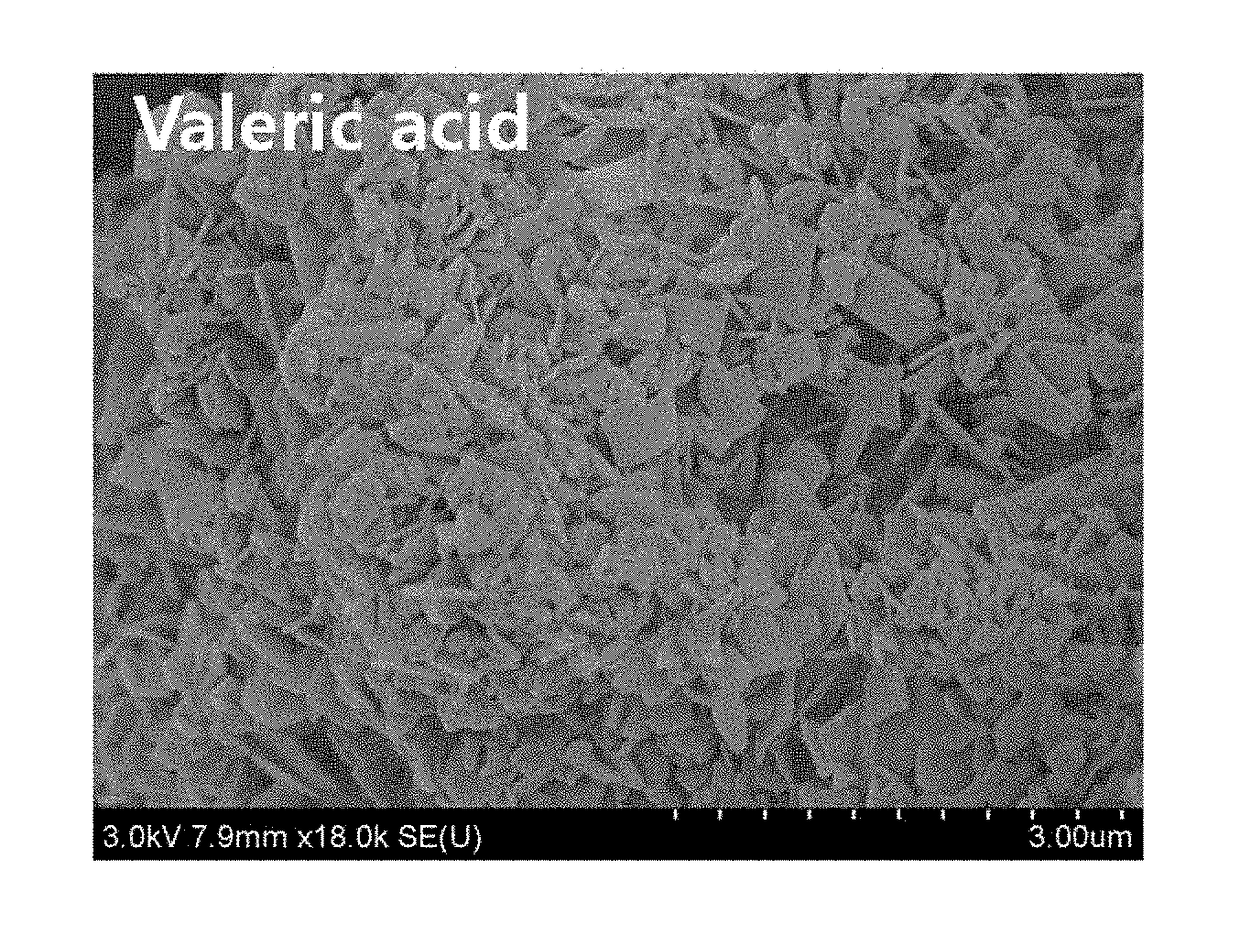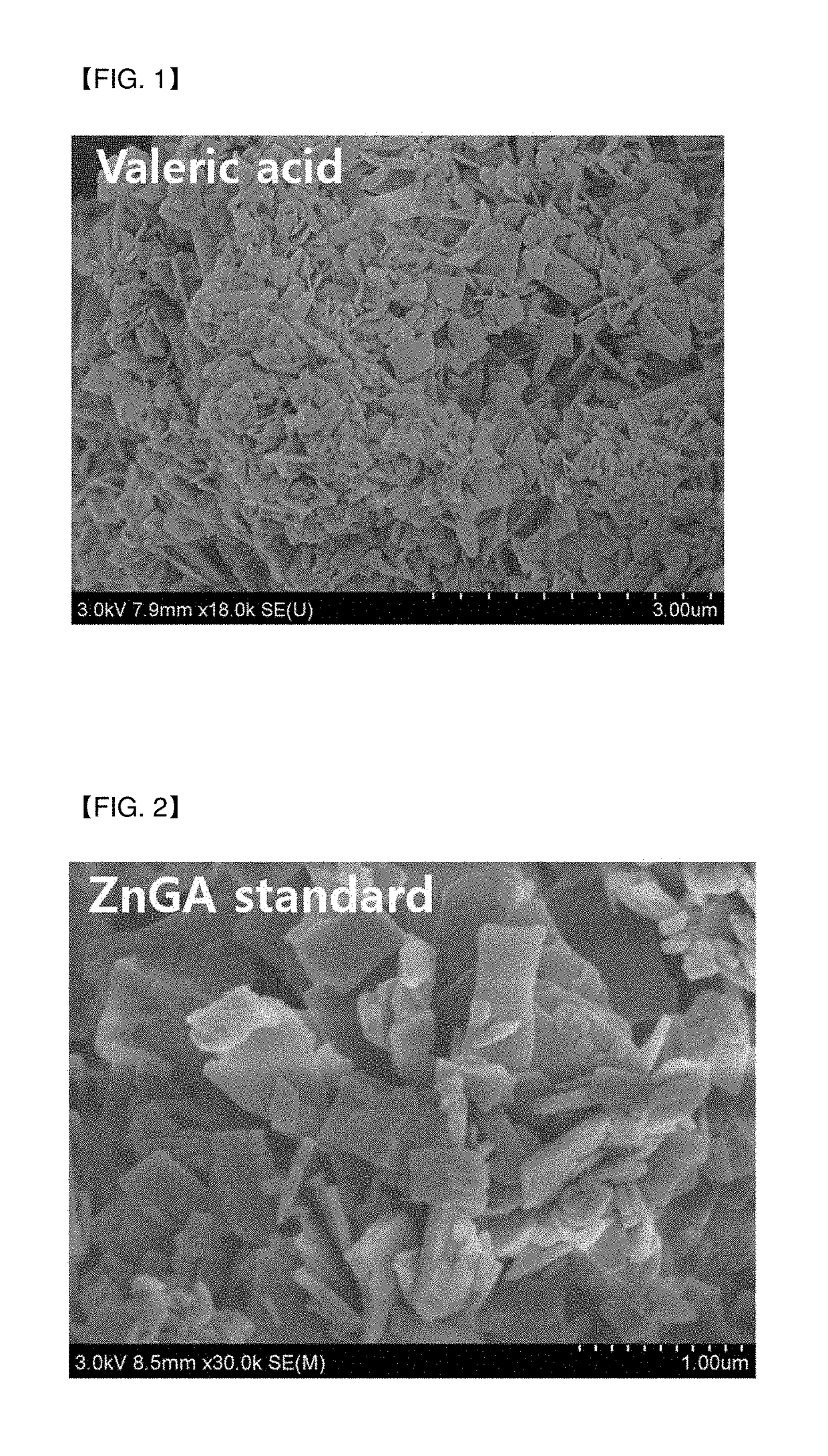Organic zinc catalyst, and manufacturing method thereof and manufacturing method of polyalkylene carbonate resin using the same (as amended)
a technology of organic zinc catalyst and manufacturing method, which is applied in the direction of organic compound/hydride/coordination complex catalyst, physical/chemical process catalyst, chemical apparatus and processes, etc., can solve the problems of catalyst having a relatively large particle size, increasing the carbon dioxide concentration in the atmosphere, and increasing the increase of the increase, so as to achieve fine and more uniform particle size, effective suppression of agglomeration, excellent activity
- Summary
- Abstract
- Description
- Claims
- Application Information
AI Technical Summary
Benefits of technology
Problems solved by technology
Method used
Image
Examples
example 1
Manufacture of Organic Zinc Catalyst
[0074]6.6 g (0.05 mol) of a glutaric acid and 0.1 mL of acetic acid were added to 100 mL toluene in a 250 mL size round bottom flask, and dispersed under reflux.
[0075]Then, the mixture was heated at a temperature of 55° C. for 30 minutes, and 4.1 g (0.05 mol) of ZnO was added to 50 mL of toluene, and dispersed. The obtained product was added to the glutaric acid dispersion, and stirred for 3 hours.
[0076]Next, 0.02 mol of valeric acid was slowly added thereto with a pipette, and heated at 110° C. for 4 hours.
[0077]A white solid was produced, filtered and washed with acetone / ethanol, and dried in a vacuum oven at 130° C.
[0078]According to the above-described method, the organic zinc catalyst of Example 1 was manufactured, and then, a chemical structure thereof was confirmed.
[0079]In addition, a scanning electron microscope (SEM) image of the organic zinc catalyst of Example 1 was shown in FIG. 1.
[0080]It was confirmed from the SEM analysis that the ...
example 2
Manufacture of Organic Zinc Catalyst
[0081]An organic zinc catalyst of Example 2 was manufactured in the same manner as Example 1 except for using a lauric acid instead of using the valeric acid in Example 1, and a chemical structure thereof was confirmed.
[0082]Further, the organic zinc catalyst of Example 2 was confirmed by SEM analysis. As a result, it was confirmed that the organic zinc catalyst of Example 2 had an average particle size of about 0.48 μm and a particle size standard deviation of about 0.28 μm.
example 3
Manufacture of Organic Zinc Catalyst
[0083]An organic zinc catalyst of Example 3 was manufactured in the same manner as Example 1 except for using an acetoacetic acid instead of using the valeric acid in Example 1, and a chemical structure thereof was confirmed.
[0084]Further, the organic zinc catalyst of Example 3 was confirmed by SEM analysis. As a result, it was confirmed that the organic zinc catalyst of Example 3 had an average particle size of about 0.57 μm and a particle size standard deviation of about 0.23 μm.
PUM
| Property | Measurement | Unit |
|---|---|---|
| particle size | aaaaa | aaaaa |
| particle size | aaaaa | aaaaa |
| temperature | aaaaa | aaaaa |
Abstract
Description
Claims
Application Information
 Login to View More
Login to View More - R&D
- Intellectual Property
- Life Sciences
- Materials
- Tech Scout
- Unparalleled Data Quality
- Higher Quality Content
- 60% Fewer Hallucinations
Browse by: Latest US Patents, China's latest patents, Technical Efficacy Thesaurus, Application Domain, Technology Topic, Popular Technical Reports.
© 2025 PatSnap. All rights reserved.Legal|Privacy policy|Modern Slavery Act Transparency Statement|Sitemap|About US| Contact US: help@patsnap.com



